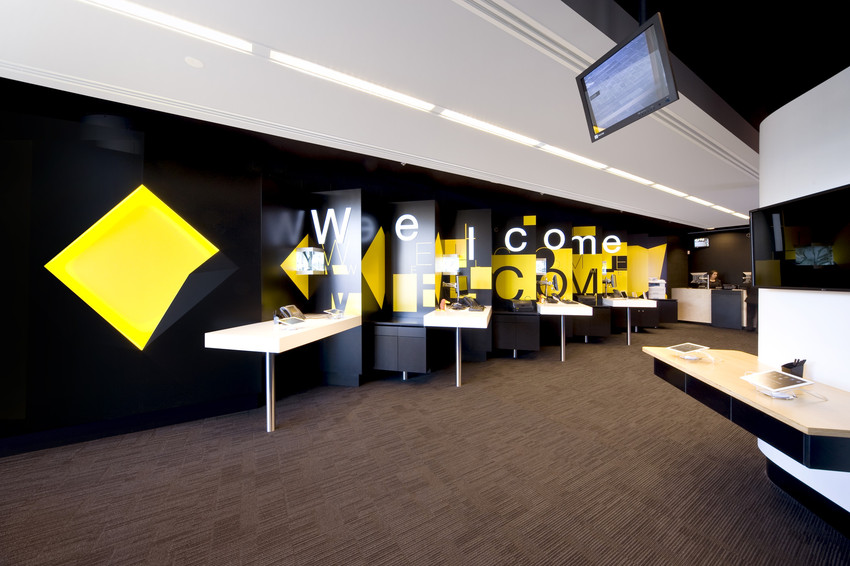How many times have you been in your local bank branch in the last 6 months (for anything other than to get a sucker)? If the answer is on more than one hand, you were probably born before the interstate highway system. If you’re saying zero, you’re probably a Millennial like me.
Since you’re reading a financial services technology blog, chances are you make up the 49% that owns a smartphone; a device with more computing power than the Apollo rocket that took us to the moon. So what are we doing with all of that power, other than Instagramming pictures of cats? We’re making our lives easier, and for most of us, that means cutting down the errands we have to run, which includes a trip to the bank to deposit a check or open an account. The future-state of banking, in particular bank branches, has two viewpoints: 1) the banks, and 2) you, the customer.
POV #1: The Financial Institution
Banks have historically been like the Titanic, slow to adapt and not very nimble. They push the wrong thing at the wrong time, and aren’t always so good at listening to customers’ needs. That’s changing, at least in some ways, because of the rapid rise in technology. Banks are looking to cut costs, lower risk, and increase margins. To accomplish those goals, branches seem like an obvious place to start. In countless cities, like where I live in Charlotte, it seems like there’s a bank branch on every corner. Bank consolidation has led to an even greater concentration of the same bank branches in an area; Wells Fargo and Bank of America for us.
So let’s look at the facts. Bank branch presence has increased by 22% since 2000, totaling approximately 90,000 locations (one for every 1,100 households with a bank account). Further, JPMorgan Chase is set to add 150-200 branches annually over the next five years. So why keep adding branches? JPMC estimates that they will earn one million dollars in additional revenue per branch. If their estimates are correct, opening more branches seems logical, even necessary. If they don’t, sizeable square footage in good locations seems like an awfully expensive way to advertise (not to mention the cost to setup, employ, and train each branch). So how are those numbers possible when branch transactions are falling at about 5% per year? Well, with the advent of online banking, direct deposit, and auto bill pay, low margin transactions are quickly dissipating, making room for higher-margin transactions.
What banks are learning is that consumers do want physical interactions, but they want them with highly-skilled, highly-trained professionals. For the bank, this means investing in personnel to assist and drive their highest margin transactions: mortgages, loans, and insurance. With increased lending, JPMorgan and others are ensuring that customers have a place to go for consultation as well as some security (people like seeing where their money is “housed”). This doesn’t mean that the entire transaction will take place within the branch, however. Customers are gravitating towards omni-channel banking (a popular industry buzzword as of late), which means for instance, that they may start their application online, follow-up via phone/web chat, and complete the transaction in the branch. Omni-channel banking reinforces the need for banks to be nimble and customer-savvy.
Some banks are going as far as redefining the bank branch to be more than just a place for transactions. Capital One/ING have created cafés in 10 major cities across the country, where coffee and social interaction is the priority, and financial advice comes from the barista that just made your latte (hello, Starbucks?). Unless you pay cash or use a Capital One credit card, be ready to hear their pitch on switching cards. Locations consistently put on events like the upcoming one in San Francisco that will host experts on Roth IRAs. There’s even reservable meeting space available to customers. All of this is there to create a “total banking experience”, where customers (or non-customers in many cases) feel like they’re valued and heard (if they want to be). Banks, meanwhile, can be the trusted advisor that their customers turn to for those high-margin transactions.
POV #2: The Banking Customer
Banking customers of today have more options than we ever thought possible (21,000 finance apps in just the Apple App Store!) and so many of them aren’t reliant on traditional banking institutions. P2P payments (PayPal, Prosper, Google), mobile wallets (Google, Starbucks, Square), and self-contained banks (GoBank, AMEX Bluebird) are enabling consumers to ditch not only brick-and-mortar, but the bank they’ve had a relationship with for years. Banking is quickly becoming an “adapt or die” industry.
I’ve banked with Regions, a superregional bank in the southeast, for my entire life. They’re based out of my hometown, Birmingham, AL, so it made sense to bank with them initially. Once I moved, branches became harder to find. Depositing a check or using a fee-free ATM became quite the affair (would you like cash back?). In addition to Regions, I’ve started banking with USAA, who has set an industry standard for customer service, especially technologically. They don’t have many branches, so they made the choice early on to invest in technology, since many of their customers are in the military and potentially stationed all over the world. Because of that, they were one of the first to offer Remote Deposit Capture (RDC) to deposit checks via my smartphone camera and I can now use ATMs throughout the US without having to pay a fee. Regions has since updated their mobile app to allow RDC, but for many Generation Y’s and beyond, it’s becoming an industry expectation.
So why would someone like me, that has no mortgage and a fairly straightforward financial situation, walk into a bank branch? What’s there that my online portal or mobile app can’t provide? Banks, this is your cue; borrow a page from Steve Jobs and define something that I don’t know that I need yet. Otherwise, let’s just meet at Starbucks.


